Dialogues is a series of articles capturing opinions, conversations and discourse relating to design theory and practice. In the second edition of this series, designers, long-time collaborators and friends Heather Griffin and Clare Bell explore and discuss the benefits of integrating alternative, critical discourse with graphic design practice.
Note: While we don't have a comments section for the time being, feel free to send any thoughts, opinions or rantings, 'letters to the editor'-style to onehundredarchive@gmail.com
____
Clare: Earlier this summer, I came across the following tweet which aroused my curiosity and interest.
“abolish the pastel racism advertorial Instagram complex”[1]
Needless to say, this tweet was just one of many contributions to the current and critical discussion around the Black Lives Matter movement. It was intriguing for a number of reasons: the expressed undercurrent of frustration with graphic design’s seemingly superficial solution to the deeply embedded and pervasive problem of structural racism; the suggestion that by packaging an issue ‘palatably’, and sugar coating it in an ‘inoffensive’ colour palette, only then will it become more accessible, digestible, and deserving of attention (but from whom, one might ask); and the implication that urgent political and societal messages will not be permitted into the visual discourse that flows on platforms such as Instagram, unless they comply with a pre-existing set of aesthetic ‘requirements’. These visual discourses (which of course reflect, construct, and embody those that are dominant in society) in turn, propagate a form of visual standardisation, wherein the subtle mechanisms of inclusion and exclusion are both central, and yet hidden from view. Their dominance is sustained by the flattening or marginalisation of both visual vocabularies and discourses that interrupt and hinder the smooth and endless stream of images, colours and type that course through our consciousness continuously. Operating as a pre-ordained set of visual standards that must be adhered to, or perhaps in aesthetic terms, ‘colour-matched’, it would seem that this mechanism facilitates the admittance of only those visual (and societal) discourses that can be given coherence in this way, reflecting and re-affirming the structured nature of racism itself.
But the questions still remain: why do these messages need to be packaged or ‘translated’ for an Instagram audience, or indeed any audience at all? Why is graphic design and visual communication, in terms of social responsibility, still perceived to be about merely packaging socially conscious messages (as the original tweet seems to suggest)? Can visual communication, through a variety of burgeoning methodologies, move closer to the heart of the matter, and construct social content in and of itself?
Heather: To suggest that the notion of graphic design as decoration bothers me would be an understatement. This characterisation is one of the reasons I have begun to critically analyse our industry and look to alternative modes of practice and collaboration.
The standardisation of graphic design, as you’ve mentioned, has existed for years. These are industry norms borne out of the commodification of design and its long standing relationship with commerce, from basic paper dimensions to social media conventions and, dare I say, in some cases the delivery of design education. In the main, commercial forms of design tend to serve the established order, which in this case is capitalism and its many layers of oppression.
If we travel back in time to the formation of the Dutch East India Company (the VOC – and it’s relatively famous logo), a trading powerhouse and instrumental in making the Netherlands a commercial and colonial empire, this was a significant moment in the history of modern day capitalism and the origins of systemic racism we continue to witness today. Such colonial powers (including Britain, France, Spain and Portugal) monopolised trading routes powered by slavery, in the pursuit of profit and sovereignty. These oppressive structures driven by an obsession with perpetual growth and profit are as potent as ever and designers involved in an uncritical commercial client and designer relationship, can unwittingly become the decorators of the status quo.
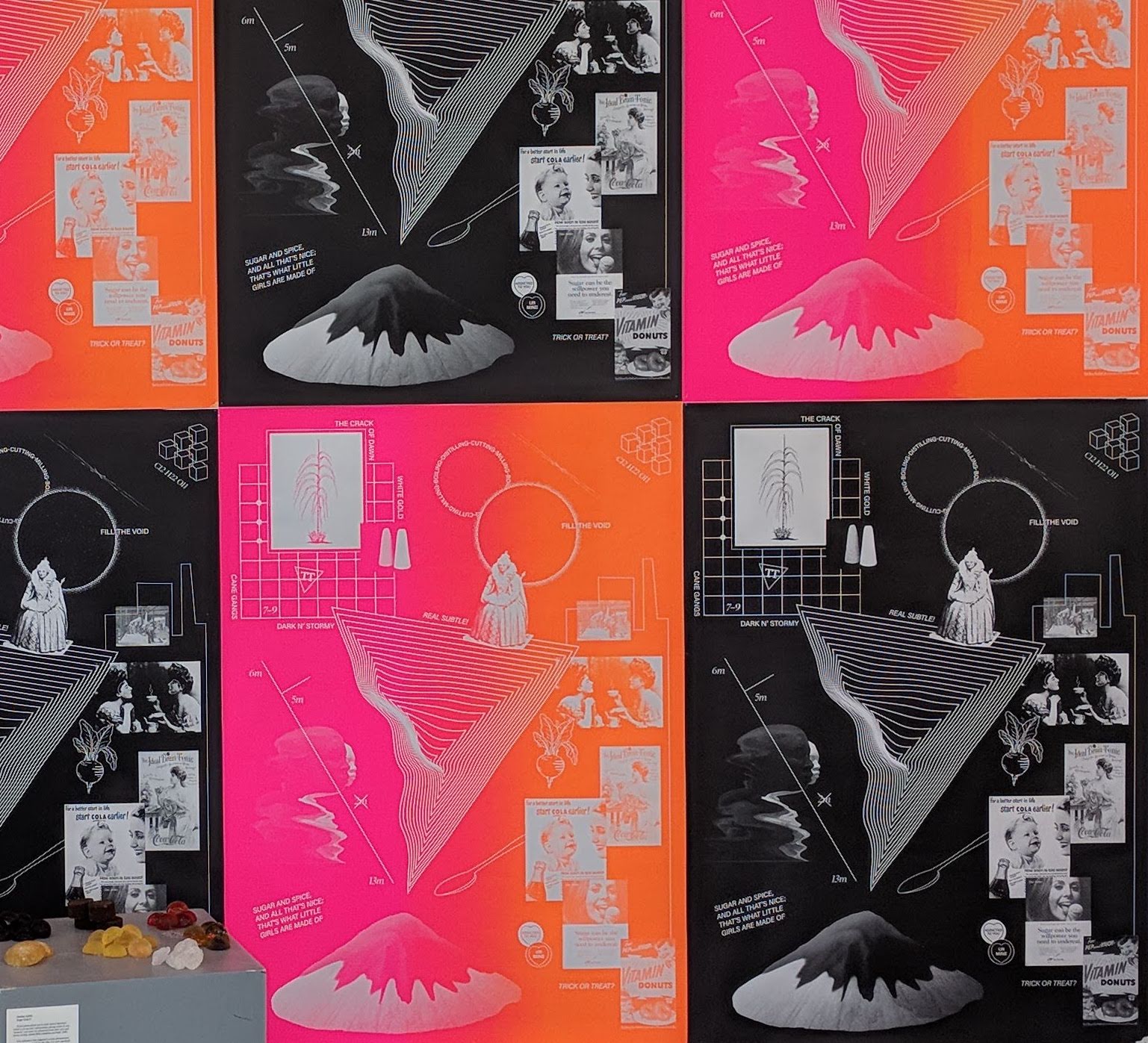
I have to agree with James Auger when he argues that the perceived notions of design (meaning all disciplines) instilled in design education are ;
“1) Design is good, 2) Design makes people’s lives better, 3) Design solves problems”. He explains, “that of course design can do all of these things but it has become so intrinsically linked to the complex systems of commerce and innovation that it has essentially been reduced to a novelty machine.”[2]
Corporations and institutions have long been appropriating radical language and visual discourse used by citizens in social and grassroots movements, diluting it and co-opting it for capitalist gain. As a result the radical intent of the original sentiment becomes clichéd and meaningless. What's called for is a more holistic, systematic, approach to design. If messaging calling for social change adopts the visual language of corporate and commercial design, making it seem friendlier, more accessible or more approachable, then it does little to disrupt the status quo. Good intentions are no longer good enough.
What if we embark on a different journey with the client, where the content isn’t dominated by a commercial output? This direction calls for a deeper level of co-creation than is possible in the commercial sphere; where the parameters are dominated by the profit margins and marketing spiel. Challenging norms and power dynamics in the shift from service provider to co-creator and/or facilitator is not an easy path but it can make for a more politically engaged inclusive form of design. Personally, I’m finding the designer-citizen relationship an engaging and interesting area full of possibilities. By citizen I mean the everyday ‘non-designer’, the active community member, producers of so-called informal knowledge. So for me, I would like to go a step further and consider replacing the traditional commercial-client role in the relationship paradigm with the citizen as co-creator. In both scenarios, designers can begin to reimagine their role as creators of social content, working from and with the source rather than for or about the source.
A good example of a design practice that doesn’t fall under this commercial spell is the work of Francisco Laranjo and his practice based design research platform Modes of Criticism. Based in Porto and not one to shy away from Portugal’s colonial history, Laranjo interrogates the criticality of graphic design from 'a problem setting perspective rather than a problem solving approach'. (Design solves problems or causes problems is a notion I have been a bit obsessed with for some time now.) His practice is a combination of graphic design, writing, interviewing and coordinating workshops and symposiums, one of which I attended at the Porto Design Biennale in 2019 on decolonising design...pre-Covid when physical symposiums were a thing. The amalgamation of these modes of inquiry are usually thematic and published in a printed journal with some articles accessible online and for the most part a thought provoking read.
Another example is Amsterdam-based ACED, the institute for art, design and journalism, founded by Belle Phromchanya and Noortje van Eekelen. The interdisciplinary approach advocated by ACED highlights the importance of looking outside our bubble, collectively pushing the boundaries of corporate standardisation and exploring alternative modes of content creation. Impartial Spectrum, a piece of work ACED created for the same Porto Biennale, was a study of international news media outlets. Taking four well publicised topics, climate crisis, the Hong Kong protests, the anti-abortion movement, and tourism, and exploring journalistic neutrality and ‘publication behaviours’ across international news media. This was exhibited as an installation of 80 prints, containing images and headlines in San Bento Metro Station in Porto. A visual presentation of multiple narratives revealing how supposedly objective news media positions itself and communicates information both visually and politically as well as how the selective consumption of such can influence our social behaviours. It is also worth mentioning that I find the concept of the biennale and its colonial origins hugely problematic but that's a whole other conversation.
There are countless other designers, studios, collectives and projects out there which interrogate and reimagine the designers role, even to the point of taking on the role of the designer not designing. This raises some questions: Should designers stop designing for capitalist systems and in that process of undesign can we become facilitators and/or critical activists to co-create alternative systems? How can systems theory, social theory, and criticality in design become more embedded in graphic design education, closing the gap between theory and practice, expert and citizen, and promoting practices that operate outside of the conventional commercial client-designer relationship, wherein design can become a more sustainable and inclusive type of practice?
Clare: All good questions! For quite a while now, I’ve been observing (with both fascination and frustration), the general tendency from within the practice of graphic design to overlook the fact that as a practice it not only, as you say, ‘decorates the status quo’ (which is reliant on particular flows of commerce and culture to sustain itself) but that having positioned itself at this specific intersection, visual communication directs and renews this flow, in turn actually constructing the status quo itself.
However, as I’ve written about before, the precise mechanisms through which graphic design can be understood and apprehended as a form of social production responsible for the cultural reproduction of social relations still remains to be established.[3]
There is, with notable exceptions (a few of whom you’ve mentioned), a lack of explicit acknowledgement of this, particularly in literature generated from within practice, which inevitably has had an impact on undergraduate education, especially in relation to the false dichotomy between theory and practice. (As an educator, I believe they should be synthesised wherever the opportunity arises.) In turn, this has resulted in a very limiting effect on the variety of discourses and practice models that are deemed relevant, applicable, or even admissible in professional practice. It has also foreshortened the capacity of visual communication, as a knowledge field, to connect and contribute meaningfully to the humanities, but that’s another story.
Too often visual communication ends up supporting the regulation and structuring of society by maintaining the distance or distinctions between things. Again, this is, in part, a result of both the way it is taught, and what it is often used in the service of: corporate culture, or for example, the commodification of cultures, as you've mentioned. As we know, this mechanism very frequently comes in the guise of visual connoisseurship and the idea of taste—which in turn translates into the idea of legitimate visual “knowledges” or “discourses” versus informal, so-called “vernaculars”. This, at its worst, leads to the perpetuation of subtle, but damaging binary notions of inside/outside, of in-groups and out-groups, and crucially, “I belong: you don’t belong”. All of this is supported by the visual—contributing to cultures of inclusion and exclusion of one form or another.
One model for visual communication, participatory design, that I’ve been exploring recently is not new, yet it has the potential to provide a framework for negotiating and navigating some of these dilemmas. But I’m interested to know what alternative methodologies you’ve been exploring in your work.
Heather: My practice is constantly evolving as I interrogate and learn from other modes of practice within and outside of the design disciplines. The current theoretical frameworks that I have been deep diving into and feeding from are Transition Design, Speculative Design, Experiential Futures and Development Education. These interests are then informed by design philosophy, systems thinking, social theory and most recently following the Design Justice Network, an international community who are committed to rethinking design processes so that they centre people who are too often marginalized by design.
Transition Design, briefly, is an emerging discipline of design research, methodology and practice. I’m most interested in it as it takes a more critical systems-level change approach to design. Rather than designing and compartmentalising the everyday and competing for a nano-second of air time offering quick fixes, transition design uses the context of our everyday to challenge existing paradigms and envision new ones, by applying an understanding of the interconnectedness of social, economic, political, and natural systems.[4] Speculative design has been accused (and rightly so in many cases) of presenting a narrative, artifact and/or experience that is considered a future ‘First World problem’ but it may well be something that is already happening to a marginalised community elsewhere in our present. Applying transition design methodologies to speculative design and experiential futures is critical for me because it informs a more pluriversal approach which considers multiple realities to avoid such blind speculation.
I have two ongoing projects where my role, as a designer, is to facilitate a co-creation process with community and school groups. My partner, a systems designer, and I have been commissioned by the Science Gallery, to work collaboratively with communities in Drogheda and Limerick exploring our futures through the materiality of plastic. It takes the format of two day workshops where each location will endeavour to construct a future world through its objects, behaviours, processes, materials and community structure. The future scenarios created are further developed by us, the output of which will feature in the PLASTIC exhibition as it travels around Ireland in 2021.[5] The resultant workshops and exhibitions will bring communities together through a critical reflection of possible future scenarios where our everyday relationship with plastics, socially, economically and politically, both beneficial and destructive is addressed and challenged.
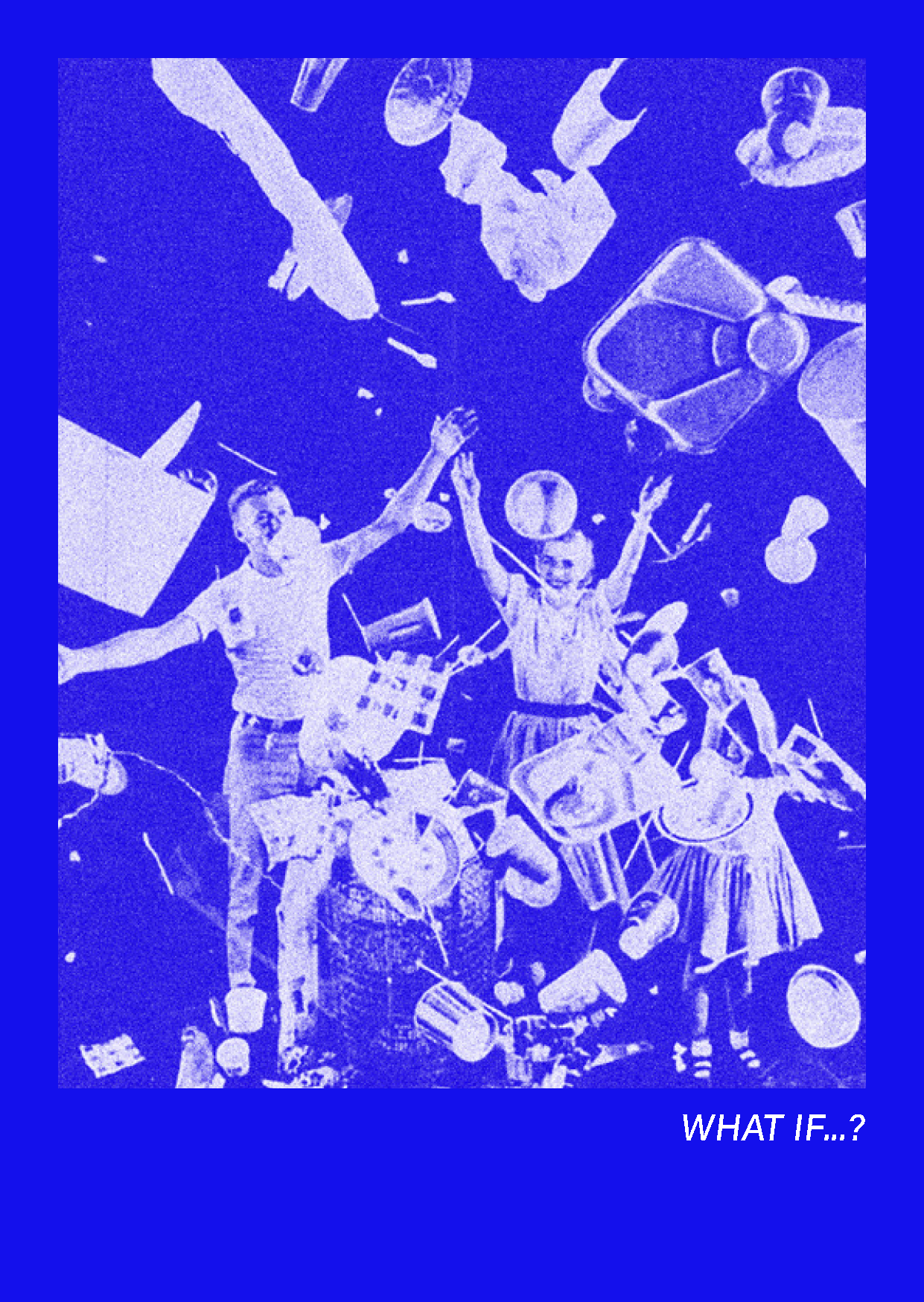
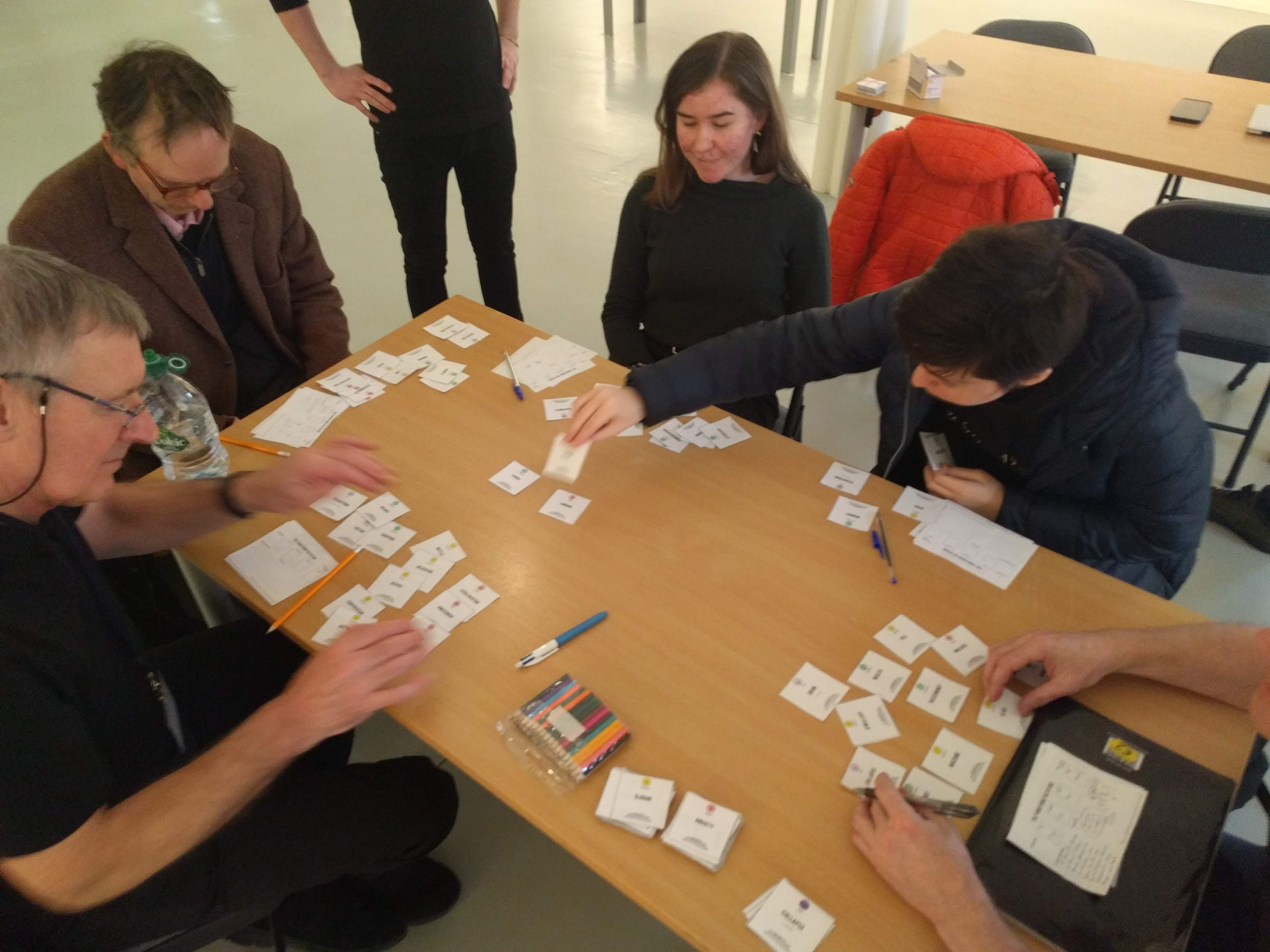
The other is the creation and delivery of a sustainable development education programme, A Giant Leap, for transition years and youth reach students. I am doing this in partnership with Amicitia, a community development social enterprise based in Athenry and in collaboration with an educator and a drama specialist. We are focusing on themes such as ritual, resources, community resilience, systems and sustainability. It’s a combination of workshop style classes and self-directed learning and making hours, fusing theatre, speculative and transition design methodologies. The final output is undefined as it is an experimental, inclusive, process that gives students a voice and allows them to explore ways to articulate their lived experience and push the boundaries of what can be described as their prescribed futures. It also suggests alternative approaches to learning for both students and teachers through participation and reflection. This project like many others hasn’t managed to avoid the clutches of Covid entirely, and we have had to alter our approach in a number of ways, but if anything this process has verified that adaptability and flexibility are key strengths we designers have in our artillery, this makes us a resilient bunch which is ideal for collective co-creation.
My aim as a designer is to highlight the absurdity of our everyday myths and realities, to provoke debate and social action towards alternative pathways. For me, this can only happen when you design and co-create with communities rather than for communities, designers as facilitators with a nod towards design for social justice and ‘critical activism’ [6], as Anab Jain so perfectly phrases it. It is very much a practice based experimental approach infused with social and systems theory. I do believe that these types of approaches allow us to create empathetic forms of design rather than sympathetic forms of design, which is how I would classify the type of palatable, inoffensive design that instigated this dialogue. While this combination of methodologies best suit the direction of my practice I am also aware that there are a myriad of others out there. You mentioned participatory design earlier on: what interests you in this mode of practice?
Clare: Well, for a long time now, (maybe too long as my PhD supervisors will no doubt attest!) I’ve been querying the nature of visual communication as an activity, by attempting to reconceptualise it as a form of theory-in-practice, or practised-based theorising in and of itself. A significant part of this process involves a reconciliation of the theory/practice divide for both studio and lecture hall alike.[7] I’ve been particularly interested in looking at and analysing the way ‘non-expert’ or ‘lay-designers’ communicate visually, to consider and evaluate the social impact of visual communication. For example, I’ve been examining the visual representation of the Irish language in Northern Ireland, focussing on how typography (particularly through the use of uncial letter forms) has become enmeshed in social processes, and how communities, on the ground, deploy typographic tropes for the purposes of self-determination and community building. Tangentially, this has led to the development of a collaborative project,[8] ‘Athraitheach: Who Do You Think You Are’[9] which explores how language, in conjunction with typographic forms, can facilitate the activation and articulation of linguistically based social identities. The project is in its very early stages, and still betrays elements of the external ‘designer-as-problem-solver’ syndrome, but it is hoped that through further research and iteration these will be ironed out, creating a space for participants to explore their own linguistic, and in turn, social and cultural identities.
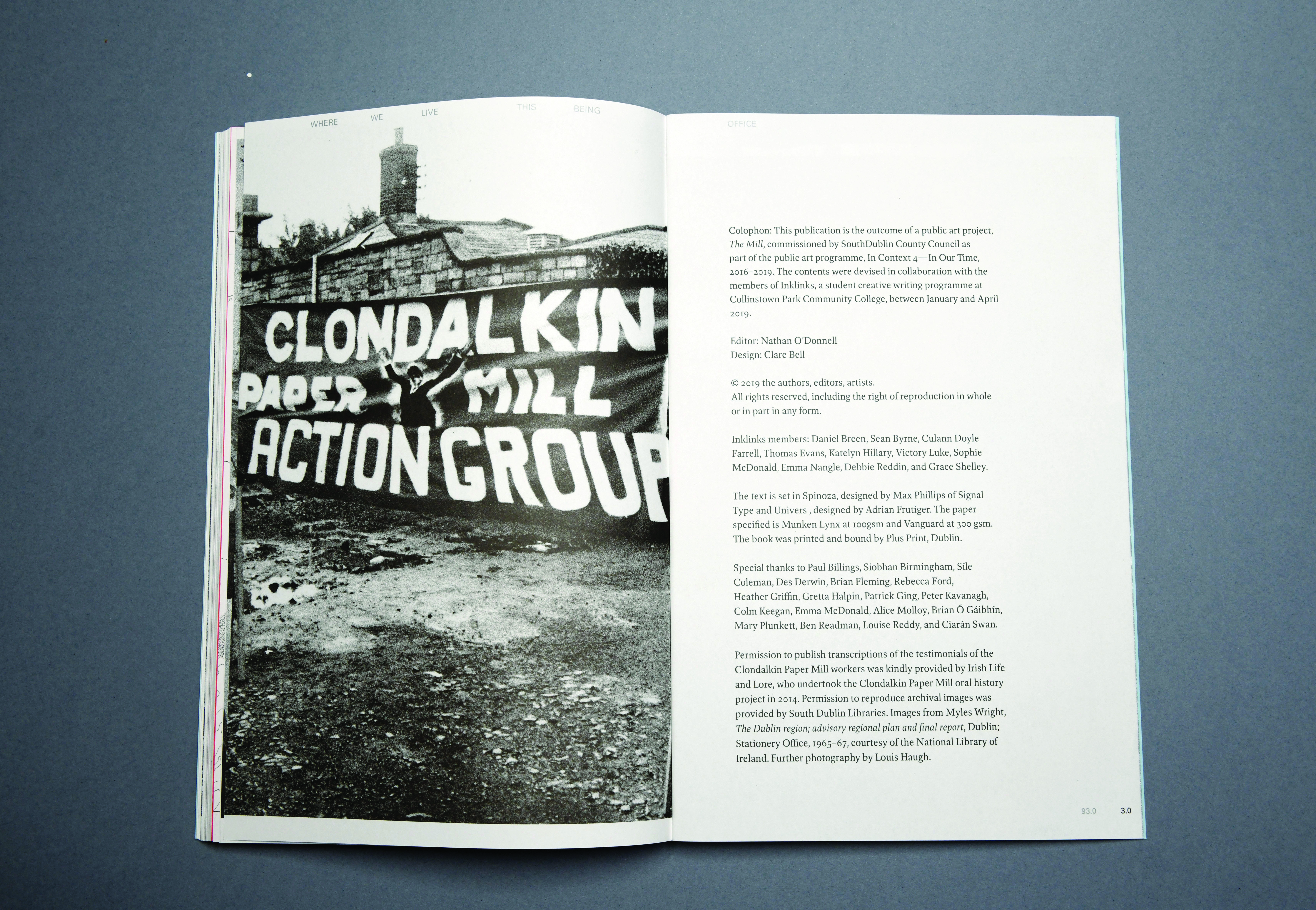
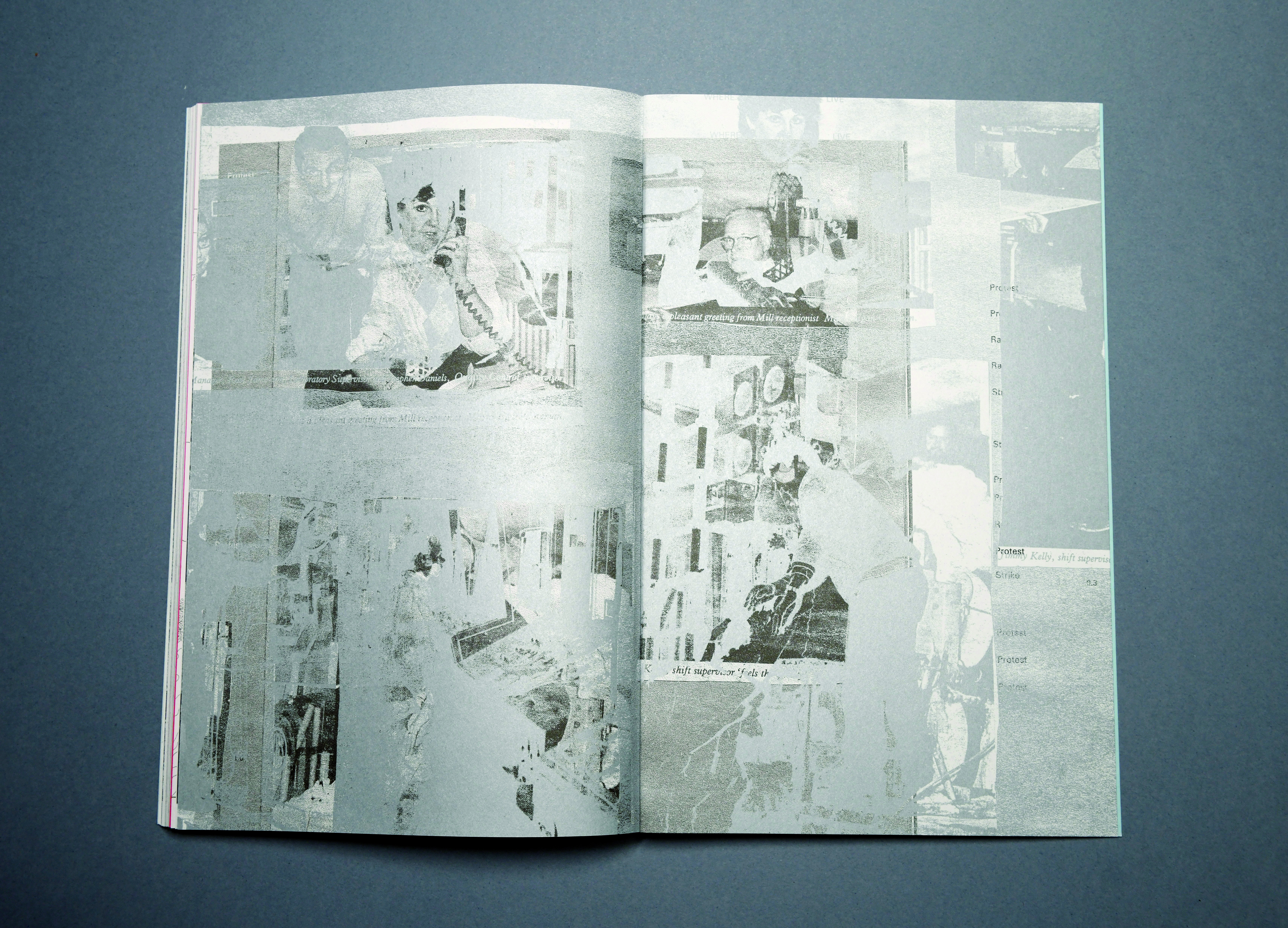
Over the last year, I’ve been working with writer, Nathan O’Donnell, on a couple of publications. ‘This Being Where We Live: Clondalkin Paper Mill Action Group’, looked at the legacy of the Clondalkin Paper Mill strikes working closely with young writers, image makers, and poets from the area. It also drew on oral histories from the workers and strikers themselves. The second, ‘This Being Where We Play: Streetwork’, (inspired by the work of educator and anarchist, Colin Ward), collaborated with school children from the Central Model Senior School, near Liberty Park in Dublin’s city centre, to re-envision the area’s potential for play and freedom.
The sympathetic/empathetic divide that you mention is an interesting one and, by extension, relates to the ‘othering’ of many forms of representation that visual communication can perpetuate, again contributing to cultures of inclusion and exclusion. Hence, it was important to place the work of all participants of both projects at the front and centre, in terms of their written content, and the visual vocabularies that they chose to instigate. During the course of assembling these publications the opportunity to reframe the editorial process as a type of participatory design arose. Through work-shopping content with participants, the aim was to “ensure that those affected by a design should have a say in the design process.”[10]
Here, the participants produced images, illustrations and writing of a type that utilised and demonstrated the children’s inherent understanding of visually constructed forms of both hierarchy and agency. These competencies also tapped into existing ecologies such as the school, park, home and play areas, and drew upon their direct experience: expertise of a kind that has perhaps fallen beyond the immediate reach of many—that of the child in the city today.
Through the bringing of our discipline resources (writing, editing, design and illustration) in alignment with the children’s resources outlined above, Nathan and I hoped to promote their voices when speaking of the decisions made by others that impact their environment, lives and future. With the emphasis on participation, it was hoped that this would not only facilitate a movement away from the dichotomy between so-called ‘layperson’ to the so-called ‘expert’, but also allow for a more precise, nuanced and pluralistic definition of what constitutes a ‘defining discourse’ or ‘legitimate’ authority.
I’ll end with the words of one participant, which became a recurring motif throughout the project, that in my view could and should become the guiding methodology for all forms of visual communication design, and underlie its best intentions: “Let everyone in, let everyone play.”
1 @delashereen, retrieved from Twitter 15/06/2020
2 Auger, J, (2016). Interview with Ivica Mitrovic for Speculative Edu - Post Designers Practice or New Utopia? p.15
3 Bell, C. (2015). Criticality in graphic design. Campaign:the journal of the Institute of Creative Advertising and Design, forthcoming in vol.3, no. 12 (Winter, 2015). doi:10.21427/D7XB35
4 https://transitiondesignseminarcmu.net/
5 https://dublin.sciencegallery.com/plastic/ (delayed due to Covid-19 as with many projects and work across the board for all of us)
6 https://superflux.in/index.php/calling-for-a-more-than-human-politics/#
7 Many conversations and debates on this topic with my colleague Dr Mary Ann Bolger helped to inform our Typography Ireland seminar programme, and ultimately provided us with the impetus to convene, with Dr Rathna Ramanathan, the Face Forward typography conference in 2015. See: https://faceforward.typography.ie/
8 Produced in collaboration with colleagues Declan Behan and Simon Sweeney for Build Peace Conference, Ulster University, 2018.
9 http://buildingpeace.typography.ie/
10 Björgvinsson, E., Ehn, P., Hillgren, P. (2012) Design Things and Design Thinking: Contemporary Participatory Design Challenges: Design Issues 28(3):101-116
____
Clare Bell is a practicing designer, researcher, and lecturer in Visual Communication (BA and MA) at TUDublin School of Creative Arts. A graduate of Central Saint Martins, she worked for a number of years as an editorial designer at The Guardian. Prior to this, she was a senior designer at Radio Teilifís Éireann. Bell is a board member of ATypI and founder member/co-coordinator of Typography Ireland. With Mary Ann Bolger, she was co-organiser of ATypI annual's conference, “The Word” (2010; hosted by TUDublin), is co-founder, convener and programmer of Face Forward International Typography Conference (2015, TUDublin) and co-editor of its forthcoming journal. She is also an assessor on the Assessment Scheme of the ISTD.
Heather Griffin (she/her) operates at the intersection of design, art and futures to bring communities together and create new narratives for our transitional times. Within this space, she presents alternative visions of the world through speculation, world-building, play, and experiential learning. A practice grounded in analysing and utilising mythologies, social phenomena, and the rhythms of everyday life. With an educational background in design and research, she has a BA in Visual Communication from TU Dublin and an MA in Design of Experiences (University of the Underground) from the Sandberg Instituut Amsterdam.